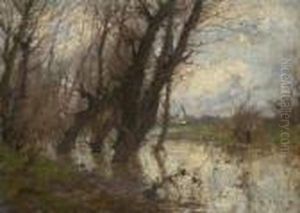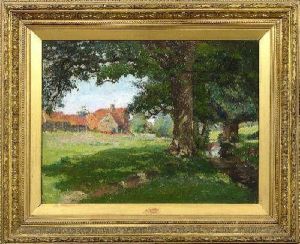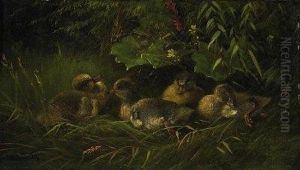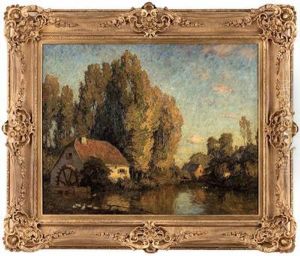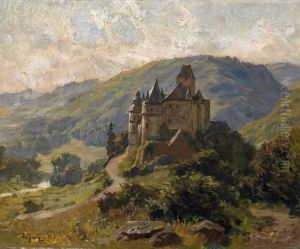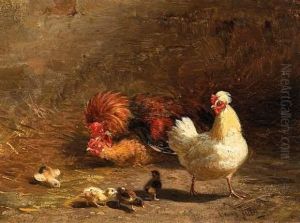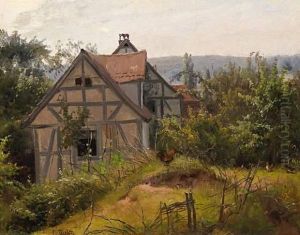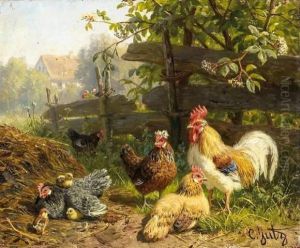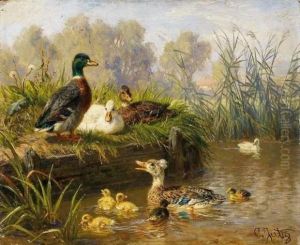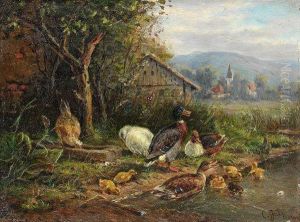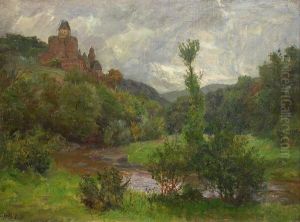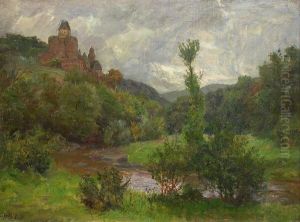Carl, Jutz Jnr. Paintings
Carl Jutz Jnr. was a German painter, born in 1857 in Winden, a small village in the state of Rhineland-Palatinate, Germany. He was the son of Carl Jutz, a well-known painter who specialized in depicting poultry and other farm animals, a genre that his son would also come to embrace and excel in throughout his career. The younger Jutz grew up in an environment steeped in artistic tradition, receiving his initial training and influence from his father.
Following in his father's footsteps, Carl Jutz Jnr. dedicated most of his artistic career to the detailed and realistic portrayal of farm animals, particularly focusing on poultry. His works are characterized by their meticulous attention to detail, vibrant use of color, and the dynamic portrayal of his subjects, which brought the scenes of rural life vividly to life. He managed to capture the essence and personality of the animals he painted, earning him recognition and appreciation in art circles.
Carl Jutz Jnr. lived during a period of significant change in the art world, with various artistic movements emerging across Europe. Despite the changing trends, Jutz Jnr. remained committed to his specific genre, showcasing the beauty and simplicity of rural life. His dedication to his craft and his ability to portray the natural world with such fidelity made him a prominent figure among genre painters of his era.
Throughout his career, Jutz Jnr. exhibited his works in various galleries and exhibitions, gaining a respectable reputation not only in Germany but also in other parts of Europe. His paintings appealed to a broad audience, capturing the hearts of both the rural populace, who saw their lives reflected in his work, and the urban elite, who were drawn to the idyllic and pastoral scenes he depicted.
Carl Jutz Jnr. passed away in 1916, leaving behind a legacy of art that continues to be appreciated by art historians and collectors alike. His work remains a testament to the genre of animal painting in the 19th and early 20th centuries, showcasing the enduring appeal of rural life and nature. His contributions to German art have earned him a place among the notable artists of his time, and his paintings are still celebrated for their beauty, realism, and emotional depth.
